Environment
Respecting our environment
Coastal GasLink's respect for the land, culture and communities guides all of our decisions.
That's why we spend a great deal of time and effort on field work and environmental studies.
At Coastal GasLink, we are committed to achieving the highest standards of environmental protection during construction, and for the life of the project. We recognize that how we navigate water crossings matters to you, and it matters to us too. That’s why we utilize advanced engineering methods to safely construct
around and across water bodies.
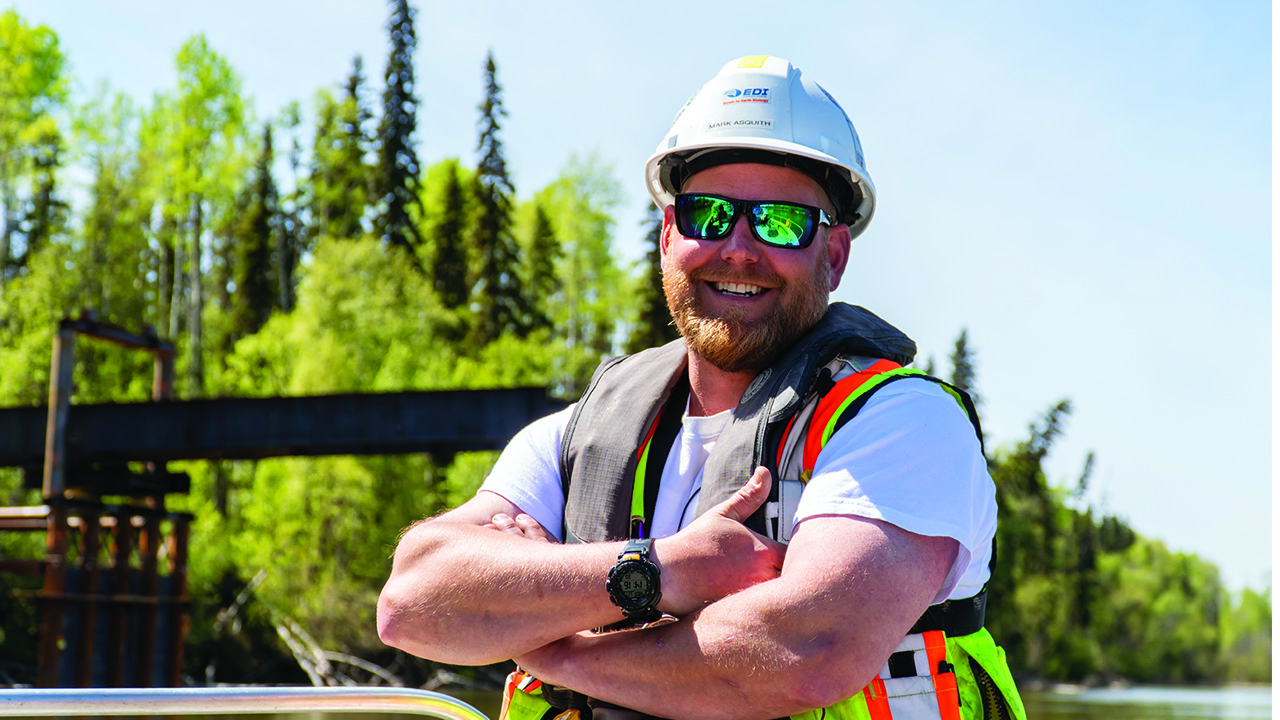
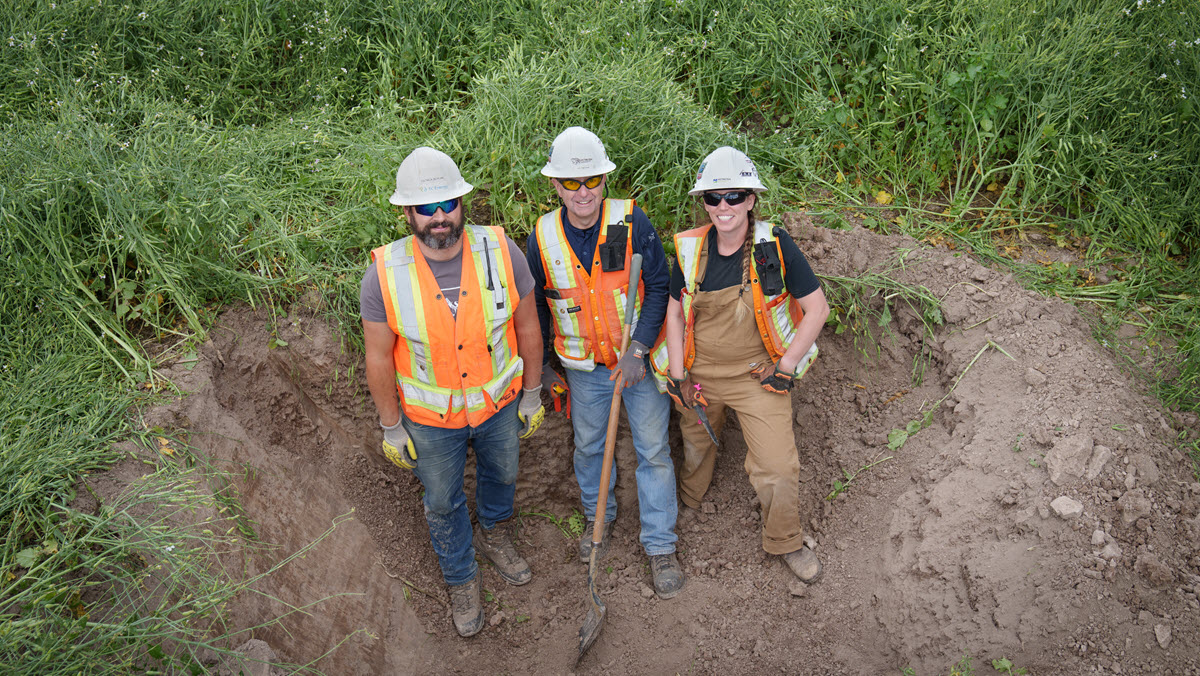
Quick fact
Maintaining the integrity of our pipe to ensure top environmental protection is paramount while constructing Coastal GasLink. That’s why we wrap the pipe in rockshield, a highly-durable yellow sponge-like material, to protect the coating from scratches and dents.
Minimizing our environmental impact
Environmental responsibility is about doing the right thing, not always the easiest thing. To help reduce our footprint and make informed decisions about Coastal GasLink, our team has been working hard to proactively identify and mitigate potential issues. This means:
- Collecting information about the local environment and sensitive environmental features for construction planning, and identifying appropriate measures to mitigate potentially adverse effects.
- Conducting field studies to gather further details about heritage resources, vegetation, wetlands, soil, wildlife and aquatic habitats.
- Engaging with Indigenous communities to collect Traditional Land Use information and Traditional Ecological Knowledge and to learn about potential concerns and issues.
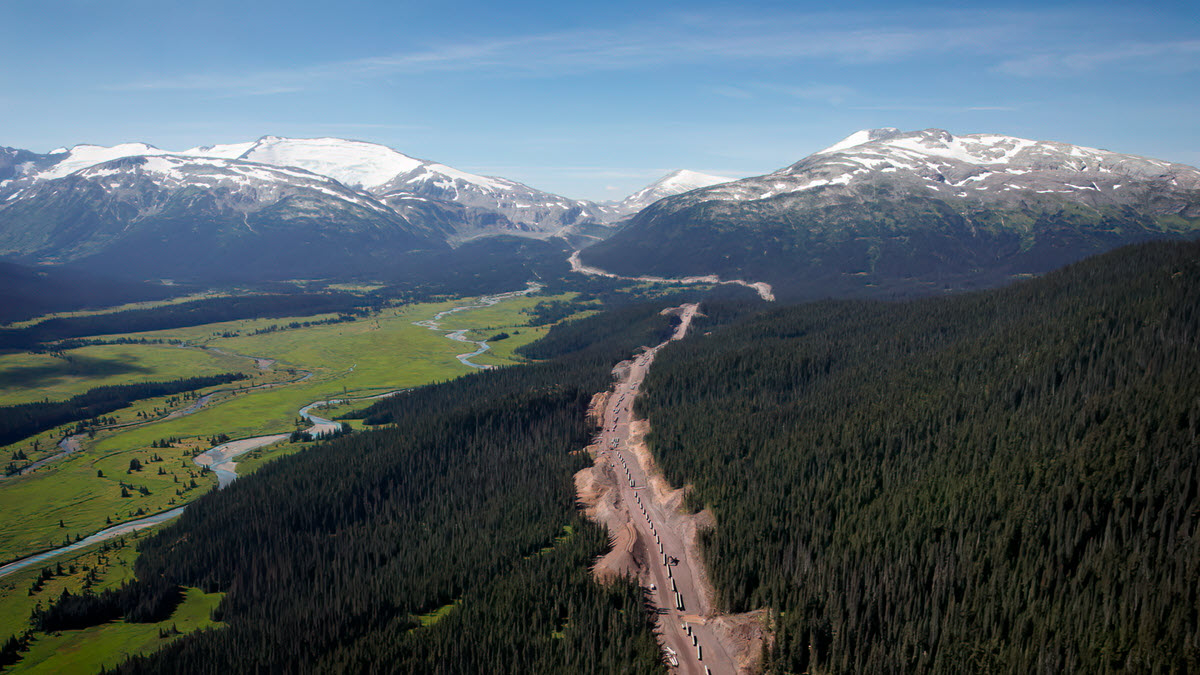
Environmental considerations on the right-of-way
Prior to construction, TC Energy secures rights to strips of land called rights-of-way. They are approximately 45 metres wide to construct the pipeline and approximately 32 metres wide for the operating life of the pipeline. Once Coastal GasLink is in operation, vegetation will be managed over about 10 metres across the pipeline, to keep the area above it clear of trees, branches and invasive plants or weeds. The pipeline will be underground, except at valve sites and compressor stations.
We’ll conserve topsoil on agricultural land, to maintain land capability. While we maintain right-of-way easement for the life of the project, we work with landowners to address any concerns caused by pipeline activities.
Did you know? TC Energy’s environmental practices have been internationally recognized for:
- Being one of the first companies to apply horizontal directional drilling versus open cut for larger river crossings.
- Pioneering the use of innovative winter construction techniques through short grass prairie ecosystems to ensure minimal impacts.
- Investing significantly in the preservation and enhancement of endangered species habitats.
- Adopting and developing new technology to make our pipelines more energy efficient and reduce greenhouse gas emissions.
- Applying mobile compressors to reduce methane emissions during maintenance programs.
Quick fact
When planning our pipeline route, we consider environmental factors, stakeholder and community feedback and constructability.
Field studies
Environmental field studies are conducted by scientists and trained field workers to develop effective protection measures. We’re studying things like soil, fish and wildlife, vegetation and more.
Our environmental field program focuses on fisheries and aquatics, wildlife, soil, vegetation, wetlands, archaeology, hydrology and terrain. These studies are conducted by scientists and trained field workers, collecting information to support the environmental assessment and to develop effective protection measures. The timing of each field program depends on seasonal factors, such as migration and nesting periods for wildlife, water levels and ground conditions. Field crews also work with First Nations community members to facilitate the collection of traditional ecological knowledge.
Areas of study during fieldwork may include:
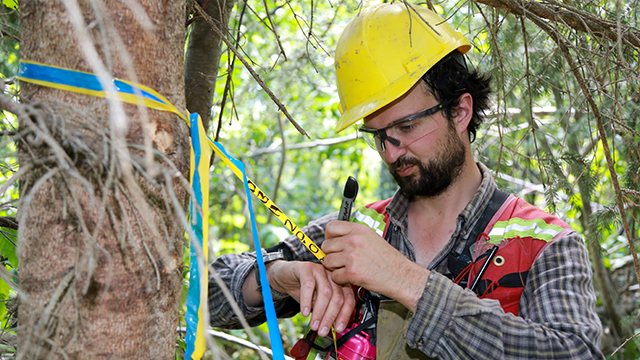
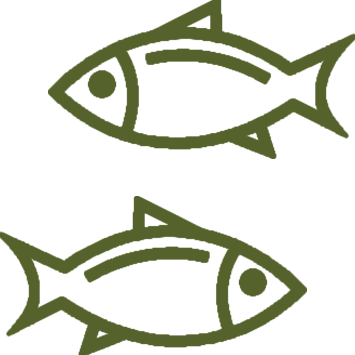 Fisheries and aquatics
Fisheries and aquatics
Fisheries biologists and field technicians collect information related to species composition and their habitats. Baseline conditions help determine the corridor design and layout, as well as best crossing locations, crossing method and timing for construction.
 Wildlife
Wildlife
Wildlife biologists conduct surveys of wildlife found in the vicinity of the project, including species at risk and wildlife habitat. Data is collected about nesting birds, fur bearers, mammals, waterfowl areas, reptiles and amphibians.
 Soil
Soil
Surveys are conducted on agricultural lands to document baseline soil conditions and to help set soil-handling measures. Crews collect data on characteristics such as salt content, particle size and organic matter. Soils are categorized according to the Canadian System of Soil Classification.
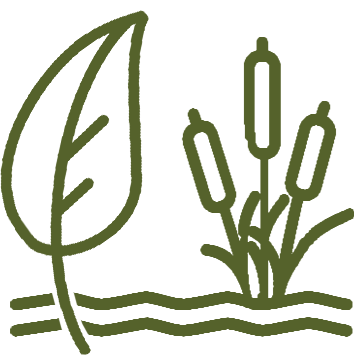 Vegetation and wetlands
Vegetation and wetlands
Vegetation and wetland specialists conduct surveys to identify wetland areas, vegetation types, rare plant populations and ecological communities. Forestry specialists undertake a timber assessment to estimate the amount of total and sellable timber.
 Archaeology
Archaeology
To comply with the B.C. Heritage Conservation Act, an Archaeological Impact Assessment will be conducted to evaluate the potential for heritage resources (e.g., archaeological artifacts) along the Project study corridor and assess any potential effects from construction. This helps in designing, planning and implementing measures to avoid or mitigate potential effects on heritage resources.
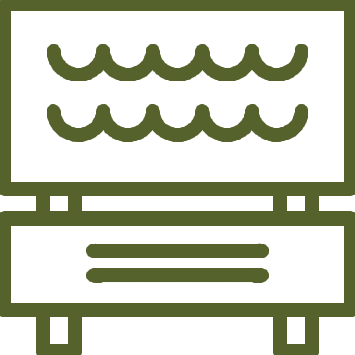 Hydrology and hydrogeology
Hydrology and hydrogeology
Hydrologists collect detailed data on all bodies of water, such as channel geometry, flow rates, temperatures, turbidity and pH levels. Hydrogeology is the study of the movement or flow distribution and quality of groundwater.
 Terrain
Terrain
Terrain types, terrain features, geological features and ecosystem types are identified. Preliminary surveys are conducted from the air, followed by detailed studies by ground crews.
![]() Timber assessment
Timber assessment
The purpose of this program is to scale and assess timber volumes in the proposed pipeline corridor to support regulatory permit applications and to develop construction clearing and timber salvage plans
Quick fact
7,200. That's how may pages of protection plans we submitted to the BC Environmental Assessment Office on Coastal GasLink
Land reclamation
Great care is taken to reduce our impact on the environment and the people who live in the area. Once the pipeline is operating, we work to restore the land to its original condition.
Over the course of our 65-year history, TC Energy has successfully reclaimed hundreds of thousands of acres of land in arid grasslands, mountainous regions, sandy soils, forest, wetlands and rich croplands. We value the landscape where we live, where we work and where we play, and like you, we care about the environment. That means we want to cause as little disturbance to the land and to the landowners and land users as possible.
Discover how your community will benefit from LNG development
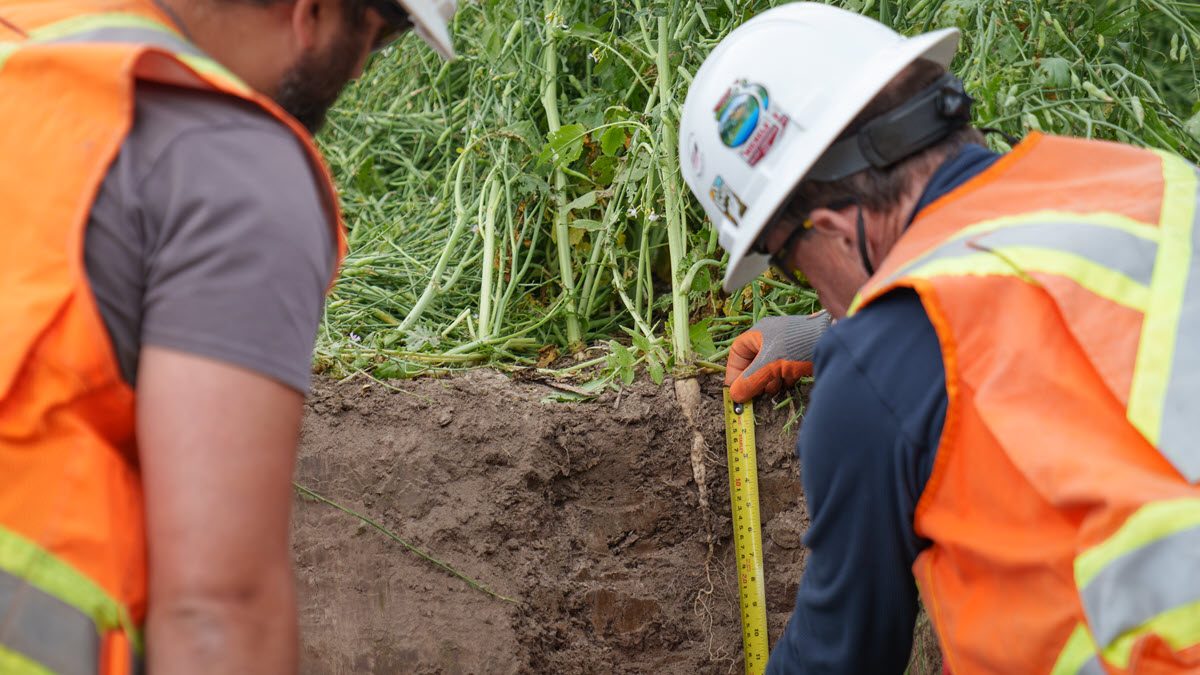
Reclamation is a large part of Coastal GasLink and TC Energy’s commitment to restoring the land to as close to its original state as possible. Tillage radishes planted at the former Vanderhoof lodge site will help to break through compacted soils, optimizing future production.
Questions and answers
What happens after the pipeline is built?
We won’t disappear or disengage after Coastal GasLink is operating. Just because construction is finished, we’re not! We have ongoing activities that include:
- A Reclamation Program which aims to return the land to its pre-construction state, including similar land capability and use of agricultural lands.
- A Post-Construction Monitoring Program that will determine how effective our mitigation was, and help us identify if any further work is needed.
- Monitoring of the pipeline during the entire operating life to ensure the pipeline corridor remains stable and the pipeline remains safe.
How long does reclamation and post-construction monitoring take?
Reclamation occurs immediately after the pipeline is buried and the soil is replaced. Post-construction monitoring occurs for a minimum of five years after reclamation. During operations, we will continue to monitor for the life of the pipeline, and if any issues arise, we will address them.
What do you do to reclaim the land after the pipeline has been built?
Reclamation is ‘top of mind’ early in the planning stage of a project, and begins at the same time as we are planning the construction of our project. To develop our reclamation plan:
- We study the results of soils, vegetation, wildlife and fisheries surveys, as well as information on current land use and traditional land use.
- We use information we gather through surveys on vegetation that our pipeline crosses, to provide the basis for preliminary seed mixes and other re-vegetation techniques.
- Current land use (cultivation, pasture, forested, etc.) information, as well as information about First Nations cultural values, is gathered to help determine specific construction and reclamation procedures to be used on a particular piece of land.
- Soil handling techniques are carefully implemented on agricultural land to protect the topsoil and prevent mixing of subsoil with topsoil, so land productivity can be maintained equivalent to the pre-construction state.
- Wildlife and fisheries surveys are used to identify areas where special reclamation measures, such as stream bank stabilization (i.e. bio-stabilization techniques) may be required to maintain fish and wildlife habitat and prevent the erosion of sediment into the water.
What’s involved with post-construction?
Over a minimum of five years, resource specialists will revisit sites along the pipeline to assess the land to compare it to pre-construction land conditions. If we find our mitigation and reclamation has not been successful, we will look at options to address the site-specific situation.
How is the land expected to look after the pipeline is built?
The land will be reclaimed as close as possible to pre-construction conditions, including vegetation such as grasses and shrubs. In forested areas, trees can grow back along the pipeline corridor except for a 10 metre wide area over the pipeline, which will be kept clear of big trees to allow for maintenance and monitoring during operations.
What if I see a problem with the land after the pipeline is built?
It’s our goal to return areas disturbed by construction to a comparable pre-construction state. If you have concerns, we will have a phone number and email available for the public to contact us about any questions or concerns. We will continue to engage with Indigenous and local communities and land users through the life of the project and appreciate feedback to ensure we continue to operate a safe and reliable pipeline.
Have more environmental questions? View our FAQs
Quick fact
We’re proud of our history and experience. TC Energy has been safely operating in B.C. for 50+ years.
Water
Protecting a valuable resource
New technologies and engineering techniques allow pipelines like Coastal GasLink to safely be installed below a river bed, leaving the natural resources above intact and undisturbed.
Like you, we value water resources. That’s why extreme care and consideration is taken when planning our projects. Our engineering and environmental field teams have spent many hours gathering detailed information about rivers and streams along the pipeline route. For all of the bodies of waters we may cross, we’ve conducted field programs to collect information to support our applications to the BC Environmental Assessment Office and the Oil and Gas Commission.
Crossing rivers and streams
There are three ways we can cross water bodies. Two methods involve excavating a trench (ditch) and the third does not involve excavation in the stream channel. We decide on which method to use, based on our environmental and engineering studies.
Learn more about how we protect bodies of water.
- Open cut – this method is used when the stream or water body is seasonally dry or completely frozen; we excavate a trench across a water way and then lay the pipeline into the trench.
- Isolation – water is temporarily redirected from its natural channel while the trench is excavated, and the pipeline is placed in the trench.
- Trenchless – through this method, we install the pipeline under the water body, without excavating a trench through the stream bed. There is no impact to the flow of the rivers and streams when completing a trenchless crossing because we don’t construct through the bed or banks; this method requires a larger footprint of activity on either side of the stream.
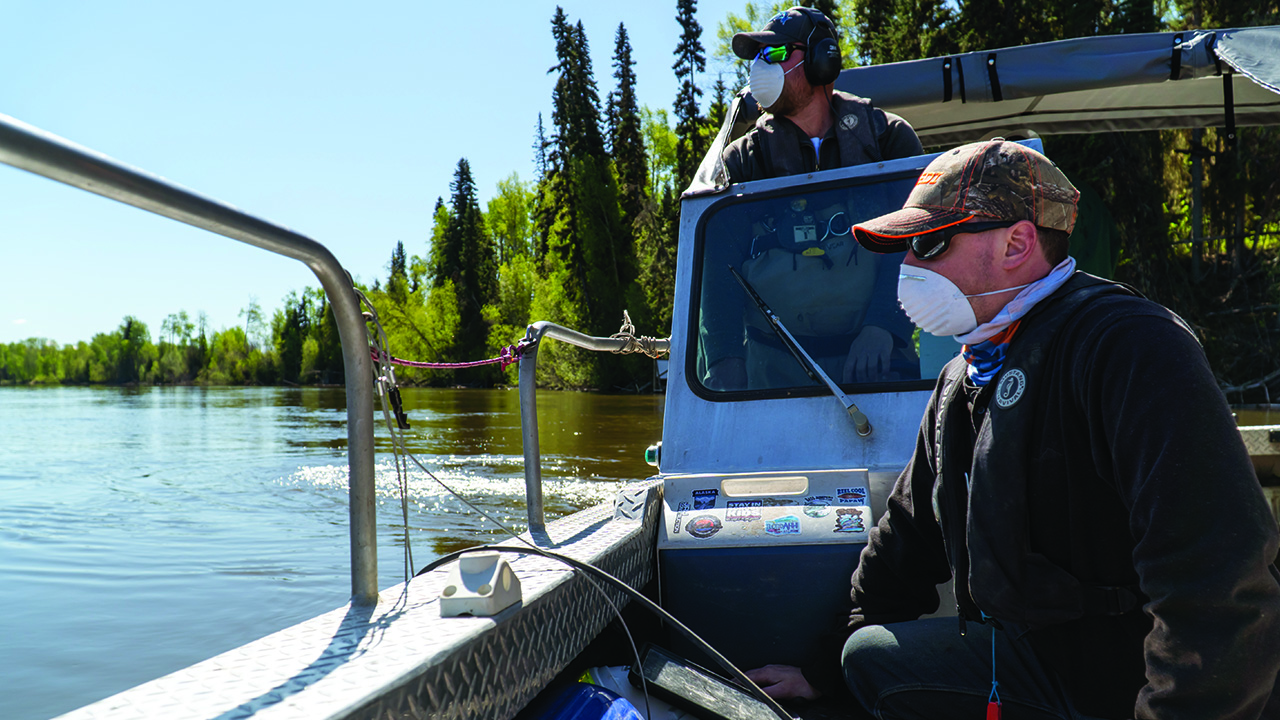
The Canadian Navigable Waters Act
Coastal GasLink is committed to building and operating our natural gas pipeline project in accordance with regulatory requirements, including the Canadian Navigable Waters Act (CNWA).
Under the CNWA, owners of works (such as bridges and pipelines) who propose to construct, place, alter, rebuild, remove or decommission works that are in, on, over, under, through or across any navigable water may be required to apply for an approval to Transport Canada, or seek authorization through the public resolution process. The Navigation Protection Program (NPP) is responsible for administering and processing applications for approval and notifications for these works, and the Minister of Transport has the authority to issue terms and conditions with an approval.
Where it has been identified that works associated with construction of the Coastal GasLink pipeline will cross or potentially impact navigable waters, applications or notifications will be prepared and submitted through the NPP.
The creation of applications or notifications will automatically publish information of the work into the Government of Canada Common Project Search (CPS) website. In addition to the CPS, Coastal Gaslink is also responsible to publish a notice of the proposed work using the same official language used in the CPS.
Information for all CNWA notifications or applications submitted for Coastal Gaslink can be found on our Construction notifications page.
Coastal GasLink welcomes all input regarding CNWA Applications and Notifications. Have questions or concerns you want to share with us? You can provide feedback through the CPS.
Questions and answers
Who studies the rivers and streams? What are they looking for?
Since 2012, we’ve conducted environmental field programs that have been made of up of 72 fisheries and aquatics crews, who spent over 43,500 hours in the field. Crews included fisheries biologists, as well as members of local Indigenous communities, who gathered site-specific information on fish and fish habitat. This information helped us determine crossing methods, construction timing, and the best measures to reduce potential impacts.
Engineering field crews have spent over 16,500 hours in the field since the project began in 2012. They focus on surveying and investigating to help us refine the construction footprint and provide input into the engineering design. Assessments at water crossings are completed to ensure the appropriate crossing method is selected for each crossing. Their studies included geotechnical investigation on potential trenchless crossings, geophysical surveys, flow measurements, and assessments on water crossings.
What happens to the rivers and streams during construction?
During construction, we monitor rivers and streams to make sure our plans are effective. This means monitoring both the stream and the surrounding river banks to understand if the measures we’ve put in place to reduce impacts are working as we expected, and to determine if changes are needed. We compare downstream measurements to upstream measurements to monitor the quality of the water, and to make adjustments when needed.
When measuring the water quality, we look at the amount of oxygen in the water, acidity, small particles and different ions that show up in the water, and the water temperature. These measurements help ensure watercourses retain the qualities needed to support fish following construction. These activities will happen throughout the installation of the pipeline on the site, multiple times per day. If the monitoring shows any unusual results, we’ll address it immediately. This could mean installing erosion/sediment control barriers; temporarily stopping work until the water quality returns to acceptable levels; or rescheduling work until conditions are more favourable (such as avoiding working during heavy rainfall, or working in the morning during freeze/thaw cycles when the ground is still frozen).
How do you protect the fish and fish habitat during construction?
Fish matter to us. We’ve developed an Environmental Management Plan, which includes measures to protect fish and fish habitat during construction. This includes measures such as:
- Avoiding disturbance of or blocking access to important habitats during key times, such as spawning areas, migration routes and rearing areas.
- Constructing when watercourses are dry or frozen as much as we can.
Isolating stream flows so work can occur during periods of reduced flow or in areas isolated from the flow. - Relocating fish downstream from the work site during construction by a qualified professional.
- Replacing appropriate material to the streambed such as clean gravel as part of restoration.
- Re-grading, stabilizing, and seeding or planting approach slopes to grow vegetation to restore habitat along the river bank and minimize potential for erosion.
What happens after construction? Are the rivers and streams still safe?
Just because construction is done, doesn’t mean we disappear! We monitor the construction footprint to see how the water and surrounding vegetation return as part of our 5-year post-construction monitoring. We look at the effectiveness of measures we put in place to reduce impacts. During the operations phase of the project, surveillance activities such as fly overs will be used to monitor the right-of-way on a regular basis. In addition our people on-the-ground may do site visits to follow-up on any noted change along the right-of-way.
By monitoring the rivers and streams after construction, we can ensure safe and reliable operations and measure how effective our mitigation and reclamation techniques were and determine if any further work may be needed.
Have more environmental questions? View our FAQs
Quick fact
Since 2014, TC Energy has sponsored 24 hours a day, 365 days a year, Coastal GasLink will be monitored.
Permitting and compliance
The B.C. government, through the Oil and Gas Commission (OGC) and Environmental Assessment Office (EAO) approves and regulates natural gas pipeline projects through their entire lifecycle.
Routine inspections are conducted across the Project throughout construction to ensure Coastal GasLink is held to the highest standards. On average, Coastal GasLink is inspected 11-13 times a month by our regulators. To date, the project has been inspected more than 500 times by regulators, with a satisfactory inspection rate of 90% as reported by the B.C. Oil and Gas Commission, compared to the industry standard of 82%.
We have been working closely with the EAO to align our construction to meet the regulatory agency’s requirements and expectations. In July 2022, we entered into a Compliance Agreement with the provincial Minister of Environment and Climate Change Strategy to provide a strong framework and greater clarity on the requirements necessary to maintain our compliance and allow our team to continue to fulfil our commitment to protecting the environment.
As we approach completion, the thousands of women and men working on the project are focused on fulfilling that commitment every day.
Have a question about permitting? See our FAQ section.
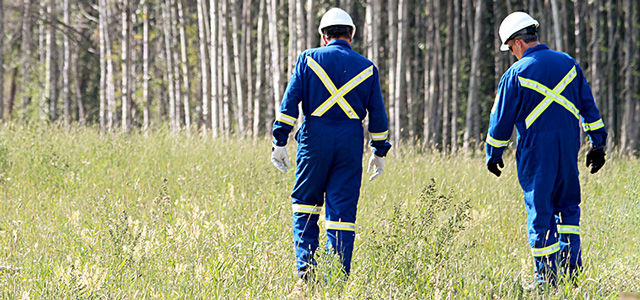
Further information about compliance is available from the Government of B.C.:
LNG Regulatory Interface ![]()
Compliance and Enforcement for Environmental Assessment Projects ![]()
Integrated vegetation management plan
Environmental protection is a top priority for Coastal GasLink and we recognize the concern across B.C. about the propagation of invasive plants.
That’s why we have supported the development of training curriculum for local officials through the B.C. Invasive Species Council, and we are currently working on a new Community Investment partnership with Northwest Invasive Species Council that focuses on further public education.
Early and rapid response to localized infestations is critical to keeping them contained and creates safe working conditions, ensures public safety and protects environmental resources and ecologically sensitive areas.
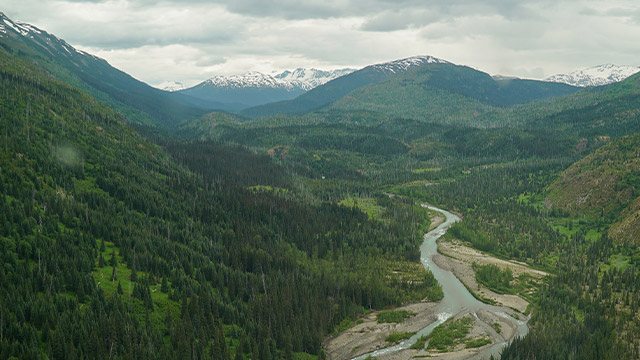
The purpose of the Integrated Vegetation Management Plan (IVMP) is to provide a framework to manage the growth and spread of noxious weeds and invasive plants and to remove undesirable trees and brush for reasons of safety and fire control, as well as to ensure pipeline or facility site security. The IVMP outlines a suite of integrated pest management principles that involve the selection of treatments that most effectively target specific plant species and problem vegetation communities, while minimizing impacts to the environment.
The vegetation management methods described in the IVMP follow guidelines outlined in the Integrated Pest Management Act and Regulation, take into consideration comments received through stakeholder consultation and commitments made to First Nations, as well as industry standards and best practices.
Our interest is to work in cooperation with our neighbours – including landowners, communities and First Nations – to implement effective weed management strategies at every phase. The plan encompasses all Coastal GasLink project areas, including the project right-of-way and ancillary sites such as workforce accommodations and stockpile sites.
Coastal GasLink welcomes all input regarding the plan, and that feedback will help shape the final IVMP.
Want to know more about our invasive plant management approach? Read our Environment FAQs.
IVMP Notices
Take a look at our current notices and maps: